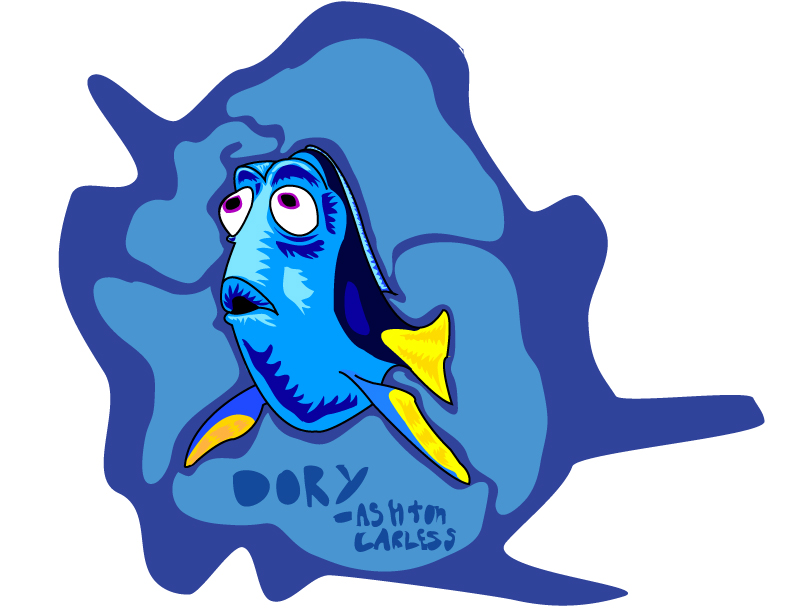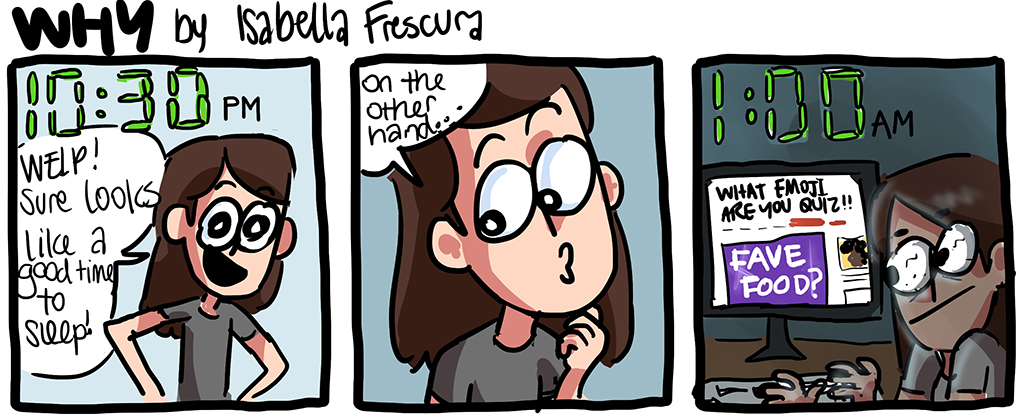By Maya Williamson
Staff Writer
Illustration by Ashton Carless
Staff Illustrator
Finding Nemo, released in 2003, introduced the world to Marlin (Albert Brooks), Nemo (now Hayden Rolence), and Dory (Ellen DeGeneres), three fish from the great barrier reef, for the first time. The original film touched viewers with its unforgettable story of family and trust. Almost ten years later, Pixar announced that the Finding Nemo sequel would soon be launched into production, and with Finding Nemo’s great success, it became highly anticipated by audiences everywhere. Now, after years of production, we have Finding Dory, in which the forgetful sidekick from the original film has the chance to find her own family.
The story begins one year after their return to the reef, and Dory has fully integrated herself into the lives of Marlin and Nemo. When Dory tags along to one of Nemo’s classes as Mr. Ray’s “teaching assistant,” a particular lesson triggers a flashback to her childhood with her parents. She becomes determined to find them, convincing Marlin to help her as she slowly regains memories of her forgotten family.
A bright new cast of characters is introduced along the way. Now joining Dory are Destiny (Kaitlin Olson), a bubbly, nearsighted whale shark from Dory’s past and Bailey (Ty Burrell), an insecure Beluga Whale. The two actors complement each other well, creating a whimsical brother-sister dynamic. There’s Hank, the cynical “septopus” with a secret soft spot, flawlessly voiced by Ed O’Niell. Diane Keaton and Eugene Levy voice Dory’s mother and father respectively, perfectly bringing to life a pair of parents who just want to provide the best for their special needs child. The star, though, is Ellen DeGeneres’ Dory, who brings the life and heart to the film. Finding Dory is full of talented actors who bring the film together as both comical and sincere.
Not only does Finding Dory have an outstanding cast, but the animation of the film is remarkable; the seamless movements and vivid pictures will stun viewers of all ages. Hank has been cited as Pixar’s most digitally complicated animated character ever. As an octopus, much of the plot revolves around his ability to camouflage into any scene, and the high quality animation shows.
The plot, like its predecessor, is both entertaining and completely ridiculous. The rescue plans go against all logic and, naturally, leave some things unexplained. Still, the “anything is possible” attitude of all the characters reminds the audience of why they fell in love with Finding Nemo in the first place.
The film is similar to the original, with the same charm, humor, and general plot line. It fails, however, to strike the same emotional chord that Finding Nemo did so effortlessly. The plot is deftly built around each flashback to Dory’s adorable childhood, but the hectic mini-adventure between each revelation doesn’t allow for the development of relationships between characters. This causes many of the one-on-one interactions that are meant to be heartfelt to seem forced or simply like ordinary conversations.
The film makes up for this with the emotional power drawn from Dory’s relationship with her disability. The most emotionally complex parts of the film occur when Dory is alone and has to directly face her short-term memory loss. The story never treats Dory as less than, but instead it is up to others, specifically Marlin, to learn acceptance of her disability as part of who she is. In this, Marlin even learns how Dory’s condition helps her to see the world differently and solve problems he cannot.
Finding Dory does not surpass the original, but it is still one of Pixar’s best sequels produced to date. Fans of Finding Nemo may not get the same heartwarming story about family they may have anticipated, but certainly will not be disappointed with the adventure focused on self reliance and acceptance expressed in Finding Dory.



